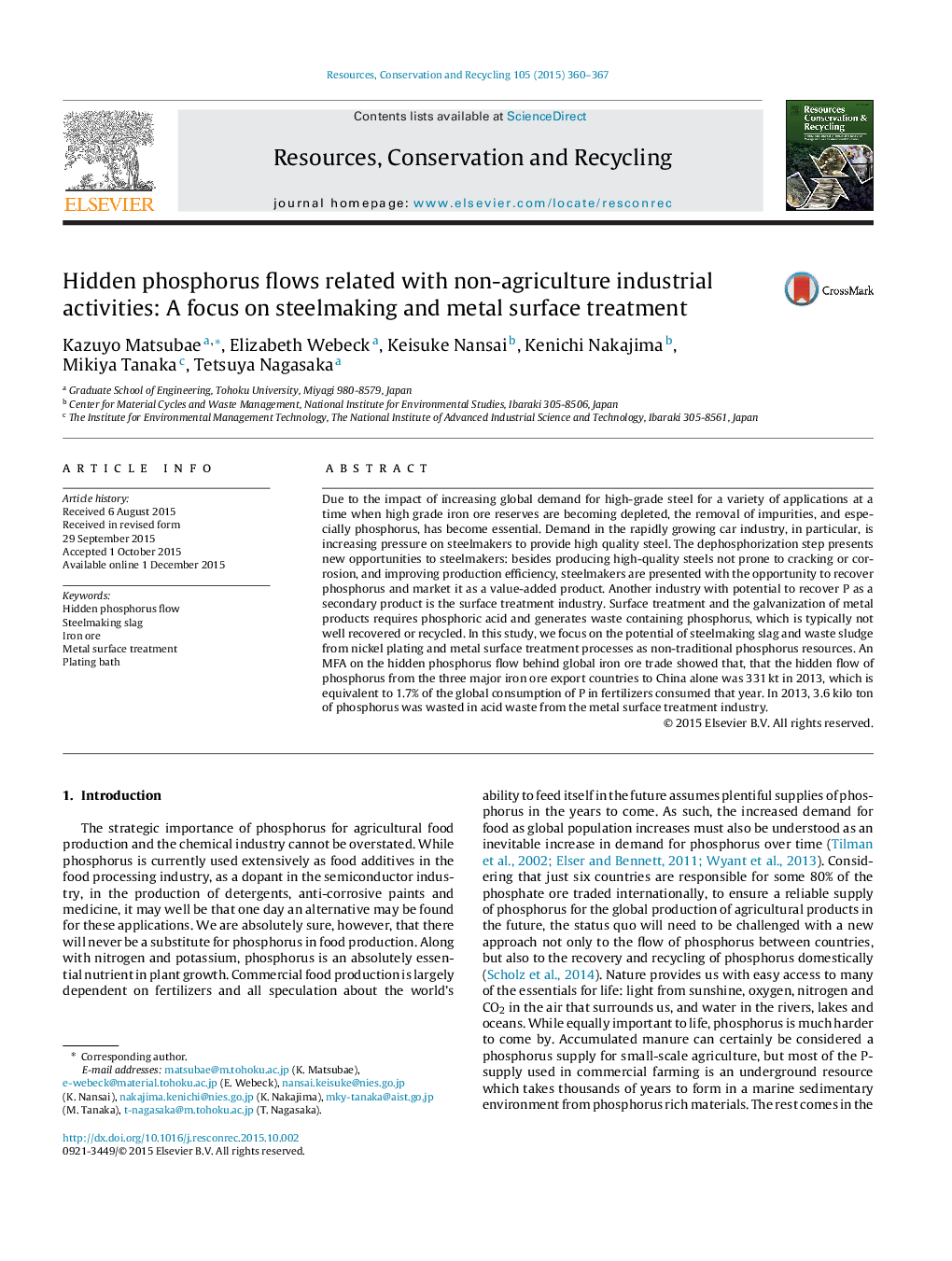| Article ID | Journal | Published Year | Pages | File Type |
|---|---|---|---|---|
| 1062751 | Resources, Conservation and Recycling | 2015 | 8 Pages |
Due to the impact of increasing global demand for high-grade steel for a variety of applications at a time when high grade iron ore reserves are becoming depleted, the removal of impurities, and especially phosphorus, has become essential. Demand in the rapidly growing car industry, in particular, is increasing pressure on steelmakers to provide high quality steel. The dephosphorization step presents new opportunities to steelmakers: besides producing high-quality steels not prone to cracking or corrosion, and improving production efficiency, steelmakers are presented with the opportunity to recover phosphorus and market it as a value-added product. Another industry with potential to recover P as a secondary product is the surface treatment industry. Surface treatment and the galvanization of metal products requires phosphoric acid and generates waste containing phosphorus, which is typically not well recovered or recycled. In this study, we focus on the potential of steelmaking slag and waste sludge from nickel plating and metal surface treatment processes as non-traditional phosphorus resources. An MFA on the hidden phosphorus flow behind global iron ore trade showed that, that the hidden flow of phosphorus from the three major iron ore export countries to China alone was 331 kt in 2013, which is equivalent to 1.7% of the global consumption of P in fertilizers consumed that year. In 2013, 3.6 kilo ton of phosphorus was wasted in acid waste from the metal surface treatment industry.
